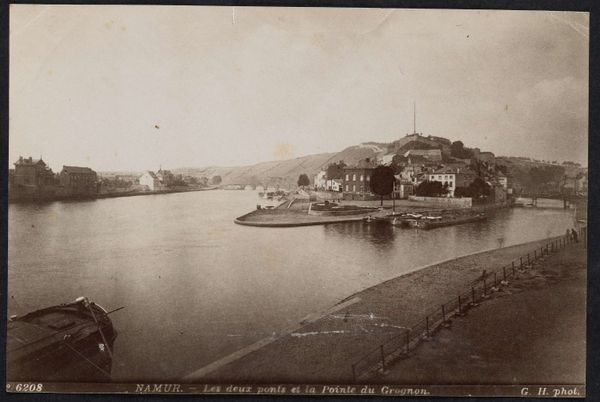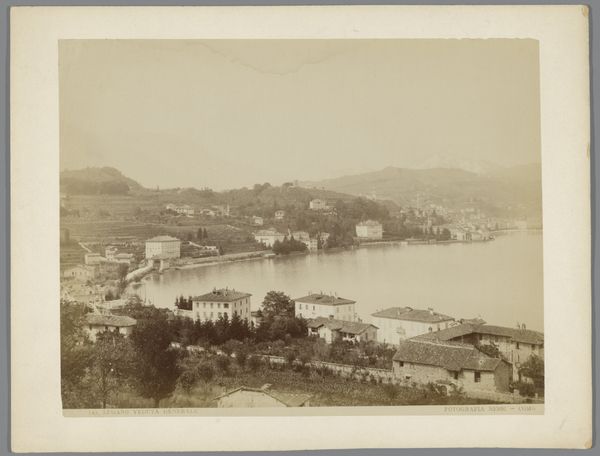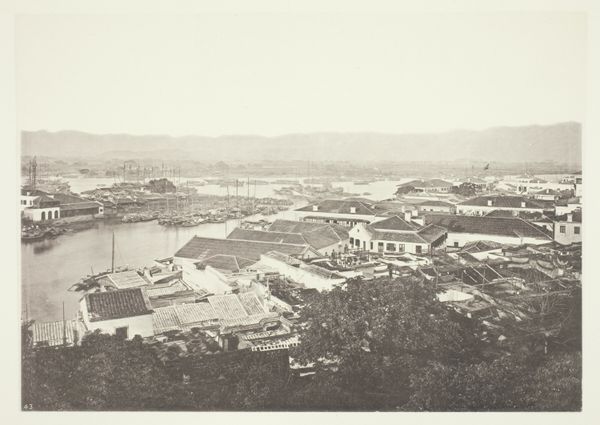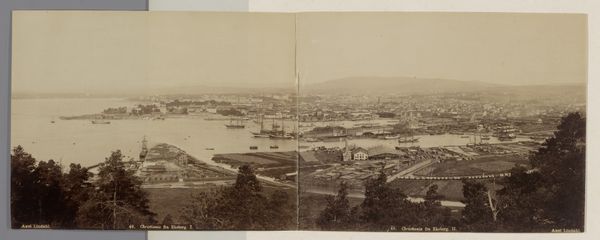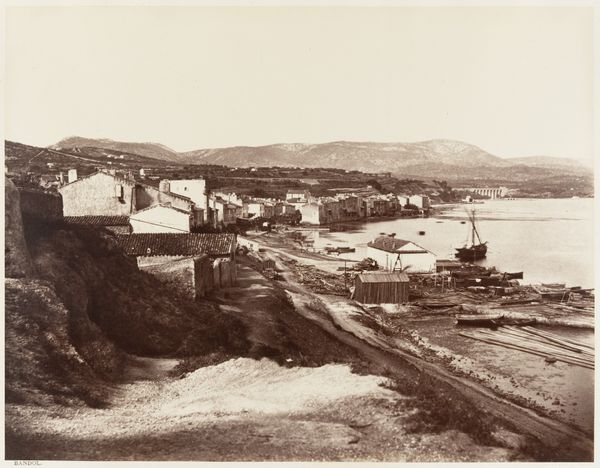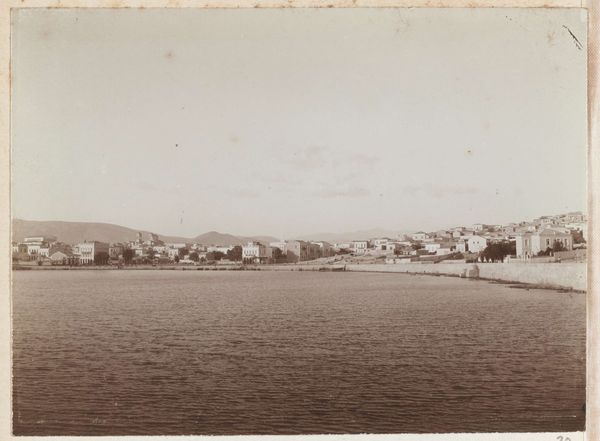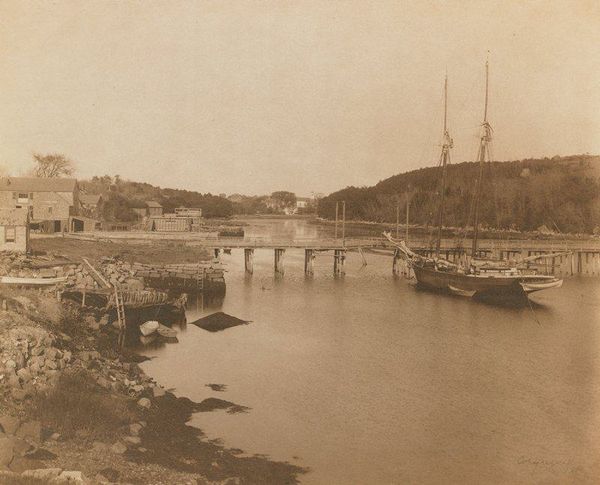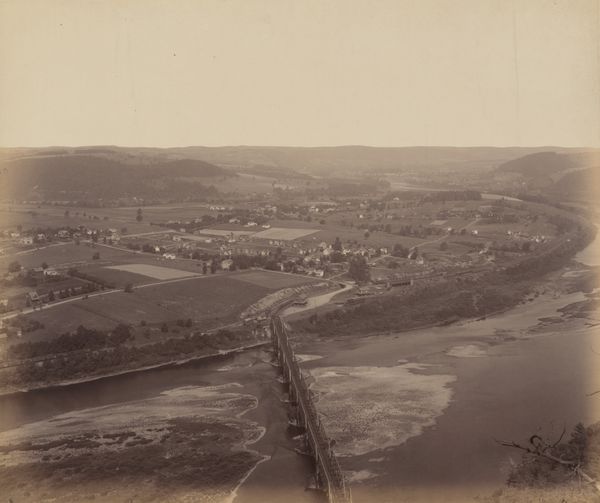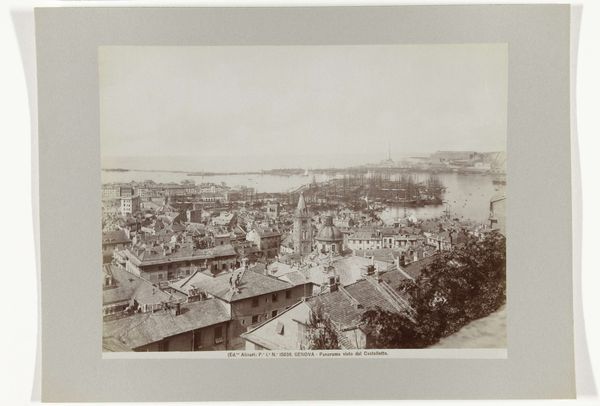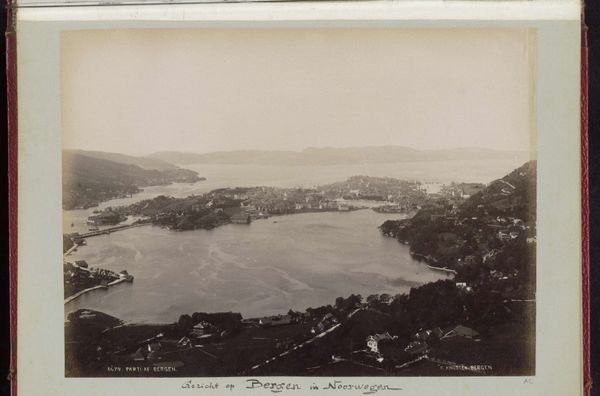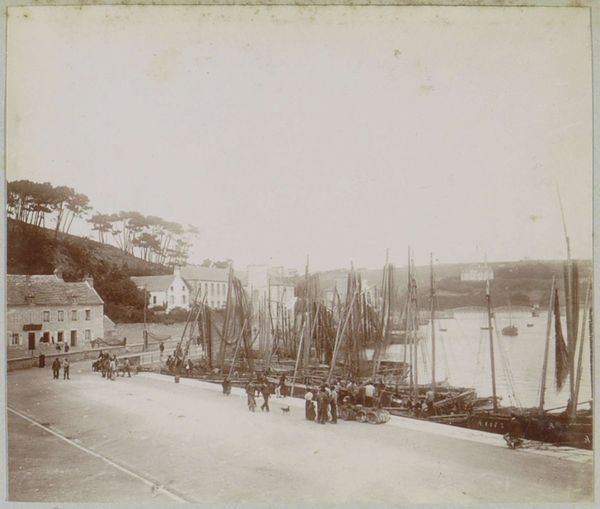
Dimensions: height 132 mm, width 204 mm, height 244 mm, width 317 mm
Copyright: Rijks Museum: Open Domain
Curator: Let's turn our attention to this gelatin silver print, "View of Oban on the West Coast of Scotland." The photographer is James Valentine, though the precise date remains between 1851 and 1880. Editor: There's a serene stillness about it, isn't there? A muted palette of sepias and creams. From this elevated vantage point, the town looks almost like a miniature model. Curator: The composition is indeed notable. Valentine manipulates tonal values, drawing attention to the architecture, and particularly, to the intricate tracery of ships at anchor in the harbor. See how the atmospheric perspective suggests depth through subtly modulating light. Editor: What strikes me most, though, is the tension between nature and industry. Those many ships—the economic drivers of the town—dot the water, a testament to global trade and British colonial reach at the height of empire. We're looking at a town whose very existence is predicated on those connections. Curator: Quite, and pictorially, those vessels also activate a rhythmic pattern throughout the mid-ground. Notice, too, how the vantage point reinforces a classical division between foreground, middle ground, and background, structuring a complex visual order. Editor: But also think about what’s missing. We don’t see any actual people. Oban comes across like a carefully staged tableau, devoid of everyday lives. I'm left wondering about the labour that enabled this aesthetic vision and this particular urban experience. Who benefited? Who was exploited? Curator: Undoubtedly, one can view this image through the lens of industrial critique. But consider also its formal construction; it’s pictorial strategy to capture the transient effects of light and shadow, indicative of a shift in photographic practice, one aimed toward achieving painterly effects, blurring the line between documentation and art. Editor: I see it more as documentation *as* artifice, and one deployed to naturalise an economic and social hierarchy. Curator: A valid point. For me, its power lies in the ways the aesthetic choices shape our understanding of the represented space, a fascinating intersection between art, industry, and social vision. Editor: I agree, engaging with it demands a layered understanding of both its visual grammar and its embedded socio-political values. It encourages us to delve deeper.
Comments
No comments
Be the first to comment and join the conversation on the ultimate creative platform.
